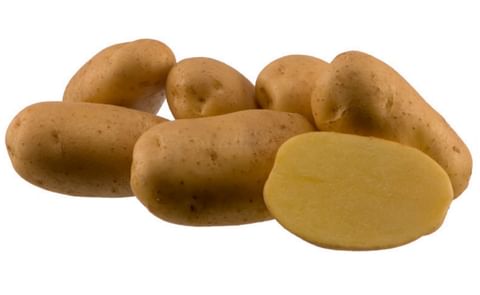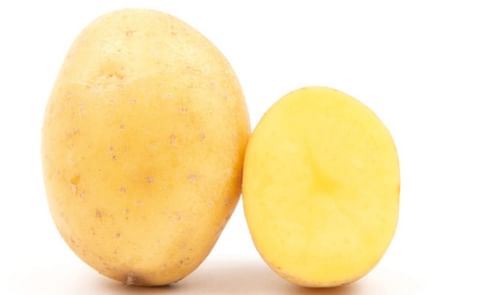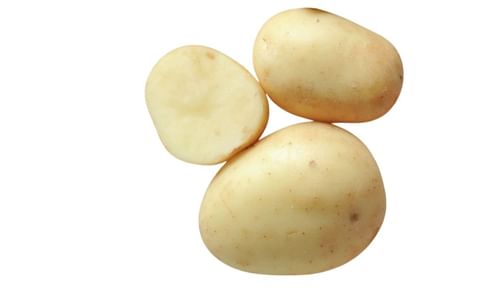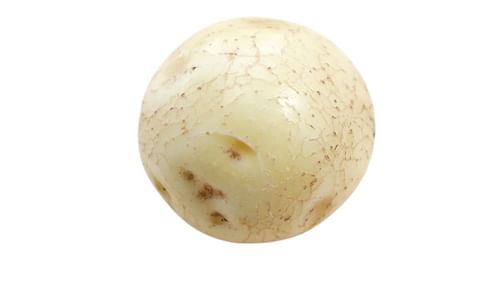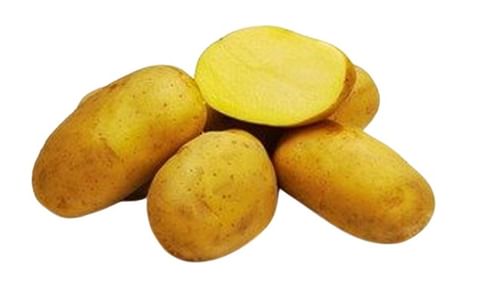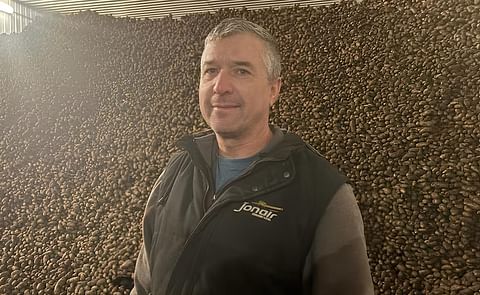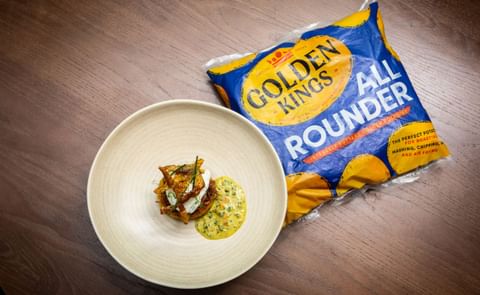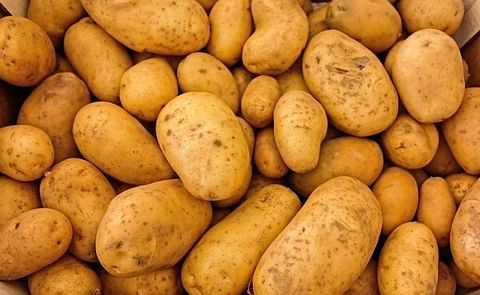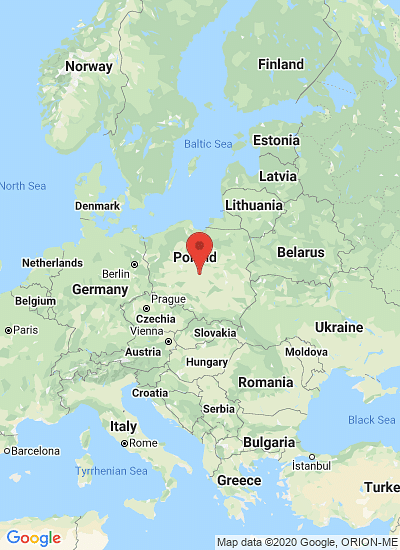Potatoes are quite popular in Poland. The potato has found its way into the hearts, minds, and onto the plates of Poles everywhere.
Big Potatoes: The History of Potatoes in Poland
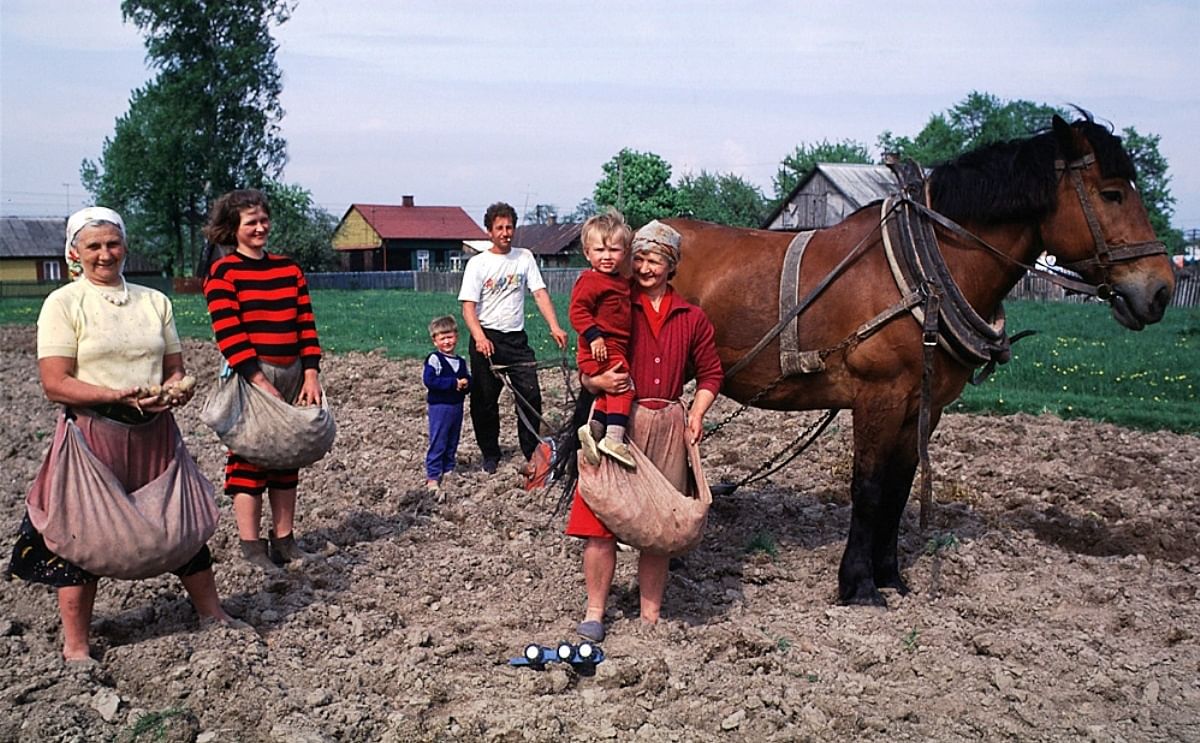
In 1821, Adam Mickiewicz wrote a poem. One perhaps less well-known than Pan Tadeusz, but worth discovering. The poem Kartofla (Potato), which Mickiewicz never finished and wasn’t published during his lifetime, describes the pleasures of life in the countryside, when suddenly… a potato jumps off of the stove and demands attention.
Adam Mickiewicz:
“While a poet praises vegetables with his lyre
Suddenly, a potato pipes up from the fire:
Orders now the lute to be set to song
So the poet rhymes as he goes along:
Thanks to God's great power, the old is now new,
From disordered worlds a construction grew;
How then, when grand millennia passed,
A certain Hebrew man made new faith for us.
While the auld Greek gods, suffering sorry fates,
Made worlds out of chaos, fleeing in great haste,
That Columbus frightened them with his brave attack
As he sailed the seas, then came roaring back,
And the Lord our God with his saints judged worth
Of Columbus' trail … so on and so forth.”
(Shetato – A Wee Poem in Four Songs, translation by Marek Kaźmierski)
Ziemniak or kartofel?
When the poem was written, potatoes had been around in Poland for quite a while – the history of Polish potato goes back 300 years. However, for quite some time this vegetable wasn’t known by a single name.
Likely no other plant or vegetable had such a plethora of names, including many different regional ones like pyrki, pyry, grule or even rzepa (turnip greens), just to mention a few.
The word ziemniak only came to be used only in the 20th century. In the 19th century books the term kartofel prevailed.
Professor Jan Miodek, a prolific Polish linguist, has confessed to his lexical penchant for the word kartofel and his specific dislike for the (most popular) word ziemniak. Kartofel is also supported by literary tradition – it was used by Mickiewicz and by Bolesław Prus in Lalka (The Doll).
Julian Tuwim also used the word kartofel in his poem entitled "Kartofle":
“ Can you feel it? The pagan years smelling of campfire,
Smouldering juniper wood crackling with sparks,
Woolly smoke drifting with the wind,
And raw potatoes wrinkling from the heat.
…And never a potato served on the table
Was as tempting as one with burning scent, charred,
Voraciously taken with a clamp-stick
Out of grey, hot flour of the forest ash.
Toss it from hand to hand! Blow on it! Watch out! It’s hot!
Its braised skin burns you when peeled!
Toss it in salt from a piece of paper! Put it in your blowing mouth and devour!
Let it melt on your jumping tongue!....”
Professor Miodek explains the origins of both kartofel and ziemniak::
“ The Polish word kartofel, even though it originates from German (Kartoffel, formerly Tartuffel), in fact comes from the Italian word tartufo which means… truffle. Not surprisingly, since old potato varieties were very similar to truffles, and besides they grew underground.
In the course of years, the meaning evolved and it changed from an edible mushroom to a plant with edible bulbs. The Polish word zieminak, on the other hand, has its origin in the French collocation pomme de terre, which corresponds to jabłko ziemne (earth apple), recorded in Polish early 20th century dictionaries.”
In 1760, Mitzler de Kolof, the Enlightenment publisher, in his Magazyn Wszelkich Nauk do Szczęśliwego Życia Ludzkiego Potrzebnych (A Compendium of Knowledge Necessary to Live a Happy Life) used the term ‘tartofl’ (because of course potatoes are necessary for a happy life!).

‘Jan III Sobieski with the Order of the Holy Spirit’ by Daniel Schultz, (Courtesy: Wikimedia Commons)
A king & his gardener
Bringing potatoes to Poland is attributed to King Jan III Sobieski (he is said to have sent a big sack of potatoes to his wife Marysieńka during the Vienna siege), but it was Paweł Wienczarek, a gardener of the Wilanów Palace grounds, who planted the exotic tubers in the gardens of Wilanów.
Later, his son-in-law, Jan Łuba, popularised potato-growing in Warsaw, during the reign of King August Mocny. As the story goes, Łuba would bring carts full of potato seedlings all the way from Saxony.
The king, craving this delicious treat, demanded to be served a plate of fried potatoes with his meals each day. As popularity of this luxurious treat grew, gardeners in noblemen’s estates began experimenting with the controversial vegetable.
Although, at first they did not have much success – no frost-resistant varieties were known at the time and their experience in potato preservation and growing was lacking.
In his Opis Obyczajów za Panowania Augusta III (A Description of Customs under the Reign of August III), Jan Kitowicz points out:
“Poles were disgusted with potatoes and considered them harmful to human health.
Some priests even tried to convince simple folk that potatoes had adverse health effects. The priests didn’t believe what they were saying, but wanted to make sure that Poles would not acquire the German liking for potatoes and would not replace wheat flour with potato starch in the altar offerings, which would be an act of sacrilege.
Nevertheless, by the end of the reign of King August III, potatoes were known all over Poland, Lithuania and Ruthenia.”
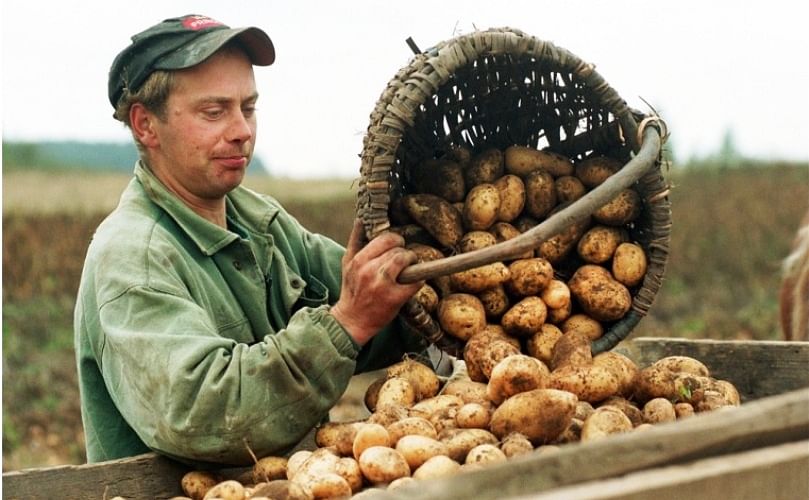
A farmer pours out potatoes, (Courtesy: Wikimedia Commons)
Endless possibilities
In 18th-century compendiums and calendars, one could read about how people used and prepared potatoes overseas. Priest Jan Krzysztof Kluk, a naturalist, wrote in 1788 that potatoes may be dried in the sun, crushed and stored for later use, for example, to make the so-called gąszcz (thick gravy) with broth or with water and butter. Such gąszcz, in Kluk’s opinion, was a healthy gourmet meal, especially for those with weak stomach. Another way to consume potatoes was to boil, slice and serve them hot with herring, broth or fish soup.
From Informacya Praktyczna Względem Gospodarstwa (Practical Information for Household Use) published in 1775, we learn that potatoes are useful and highly beneficial, and ‘can be used as nourishment for people in many ways’.
Boiled in their skins and garnished with a pinch of salt and a little butter, potatoes make a filling and exquisite meal even for those who couldn’t afford much; baked in hot ash they tasted like chestnuts; many people cooked them with meat, while others fry them in butter – peeling, slicing and blanching them first.
Doświadczenie w Gospodarstwie(Household Experience) published in 1792, shared information on ‘various ways of using potatoes practiced in America’, which included bread-making. Europeans who visited the United States and allegedly tried such boiled potato bread agreed that it was tastier and more nutritious than wheat bread.
Moreover, it was more nourishing. Centuries later, bread with potato is associated in Poland with rural, ‘grandmothery’ cuisine.
Also, a recipe for an ‘ancestor’ of crisps came to Poland from the faraway America. In the 18th century, crisps were produced to be consumed during long journeys. The potatoes would be boiled, peeled, thinly sliced and dried in a bread oven. ‘There they would dry up and become translucent and hard’. Prepared this way, potatoes could be kept for months ‘without getting rotten one bit’.
The possibilities of preparing potatoes appeared to be endless. In Staropolskie Przepisy Kulinarne: Receptury Rozproszone z XVI–XVIII Wieków(Old Polish Culinary Recipes: Scattered Recipes from 16th-18th Centuries), a publication from the Monumenta Poloniae Culinaria (Polish Culinary Relics) series, edited by Jarosław Dumanowski, there is a recipe for potato kasza (groats) or rice:
At the end water is strained and starch is taken out to dry. The flour produced in this way gets finer with time. Such flour is mixed with egg whites and sieved through a strainer or a colander, or through a thinly-woven piece of linen cloth. Small bits that come out are left in flour to dry. They are stored for later use. Such kasza is not much different from rice.
If one could make rice from potatoes, why not pasta? According to a recipe from 1791, ‘thin noodles’ may be produced as follows:
Peel the skin off boiled potatoes and clean them thoroughly, then mash them into flour and put this mass into the device used for making noodles.
Such an old noodle-making machine looked like a tin cylinder with holes at one end.
From the dough coming through the tiny holes in the cylinder, noodles are made. When dried, they may be preserved for several years.
There is even a 200-year-old recipe for ‘coffee’ made from potatoes, found in Krótka Wiadomość o Kawie, o Jej Własnościach i Skutkach na Zdrowie Ludzi Wpływających (A Concise Book on Coffee, Its Nature and Effects on Human Health) and passed on via Receptury Rozproszone (Scattered Recipes).
Coffee made according to this recipe was supposed to be very healthy. It didn’t heat one up like ‘real’ coffee and was well-suited to the Polish climate. How was it made?
Take potatoes, cook them, peel and slice thinly. Place the slices on a wooden board or a baking tray and put them in the oven to dry. Then ‘roast’ them, like real coffee, and grind in a coffee grinder. To ensure the right texture of the beverage, it was necessary to add… one egg white to eight cups of powder prepared according to this recipe.
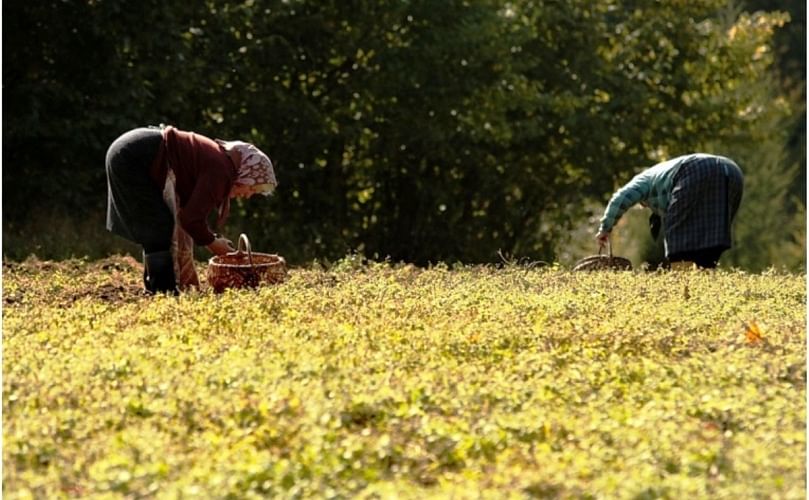
Museum of the Lublin Village, traditional potato harvesting, 2009, (Courtesy: Jakub Orzechowski | Forum)
Sustenance for the poor
However, it was only in the 19th century that potatoes gained economic significance in Poland. More and more cookbooks were published containing a growing number of recipes, some of them quite weird, with potatoes taking centre stage.
Jan Szyttler, the author of pioneering cookbooks of the age of Romanticism, next to recipes for potato dumplings or pâtés that seem banal and common today, added a somewhat surprising recipe for potato pickles, the so-called kartofla wiosenna (spring potato):
When you have new, small potatoes in the spring, marinate them a little in vinegar for use in the autumn for various marinades and salads.
Very small potatoes should be used for such pickles. After boiling, the potatoes had to be cooled in icy water and when cooled completely: ‘each should be peeled separately, placed in a jar and covered with boiled white vinegar flavoured with spices’.
Along with German and American potato farming methods and recipes, ways of producing starch and alcohol from potato bulbs were also transplanted to Poland. In the first half of the 19th century, vodka-making handbooks, such as Praktyczne Gorzelnictwo (Practical Distillation), published in 1841, were quite popular. Some authors claimed that potato bulbs could be used not only to make vodka but were also perfect for… the production of wine.
A brochure entitled O Syropie Kartoflanym i o Winie z Syropu Kartoflanego (On Potato Syrup and on Wine Made of Potato Syrup), published in 1861, provides information about such a wine, for use by ‘those less well-off’.
‘Potato-starch syrup (…) produced in Lachowice, in the factory of Izydor Pietruski, a widely respectable citizen’, was behind the attempts to make potato wine, using fruit as the fermenting agent. Wine produced this way, containing potato syrup and some potato gum, could be stored for as long as 20 years:
Having kept some wine in a few bottles for 20 years, I have discovered how good it was; kept in half-filled bottles, the wine didn’t go sour at all.
Potatoes are an essential ingredient of the famous Rumford’s soup, which was often fed to those less fortunate. This nutritious soup was served by philanthropic-minded people in Munich as well as Warsaw and Kraków.
The recipe was invented by Benjamin Thompson Rumford, an American living at the turn of the 18th and 19th centuries, who escaped to Europe during the American War of Independence.
His research led to the creation of a dish which, according to the knowledge at the time, was perfectly balanced nutritionally and was easily affordable.
According to the original recipe, to make Rumford’s soup you needed 1 part pearl barley, 1 part peas, 4 parts potatoes, and chunks of bread. The name of this soup was even used as the title of a painting by a Kraków-based artist, Hipolit Lipiński, who captured a charity event organised in front of St Mary’s Church in Kraków.
The soup reached Polish lands in the early 19th century. It was cooked by charitable associations that run kitchens for the poor and homeless. In Warsaw, for example, there was a Rumford’s Soup Society. It operated for many years and served tens of thousands portions of this soup to the poorest Varsovians.
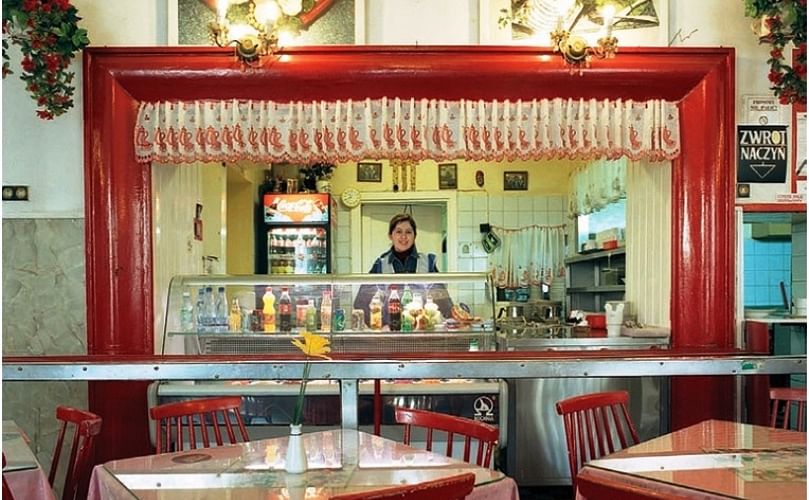
A Milk Bar, (Courtesy: Nicolas Grospierre | Mamastudio)
The rise and fall... and rise of the potato
In the second half of the 19th century, Henryk Dołkowski bred potato varieties which could compete with the German varieties which were dominant at the time. Polish potato seedlings became popular in Hungary, Germany and Bulgaria, and, in the late 19th century, were even awarded at different agricultural expos.
Potato cultivation continued during the interwar period and brought over 100 potato varieties to Polish farmers and tables, in the form of potato dumplings, noodles, pancakes and pies. Potato-based recipes were not only presented in cookbooks but also in magazines addressed to the working class or women. Cookbooks devoted specifically to potatoes also began popping up.
World War II largely destroyed Polish achievements in potato growing, especially in the parts of Poland incorporated into the III Reich. Thus, as soon as the war was over, Polish scientists immediately started to rebuild the potato industry. They were successful – the potato became one of the most important foods in Poland under the communist regime.
In the 1940s and ‘50s, in the face of food shortages, it became necessary to base daily diets on potatoes, and thus, an abundance of recipes for potato dishes imitating popular meat dishes such as meat loafs, meat balls or meat cutlets were created.
In the 1950s, in reply to a critique of their modest menu published in Życie Warszawy (The Life of Warsaw) daily, the management of Milk Bars Company wrote with dignity: ‘the milk bars that have appropriate facilities will cook and sell potato dishes, accompanied of course by curd milk.’
Cookery books dedicated to potato dishes had also been published before 1939, but in it was only in the 1980s that a book entitled 500 Potraw z Ziemniaków (500 Potato Dishes)by Bolotnikov and Vapielnik was translated from Belarusian and published in Poland. Its introduction highlighted the importance of potatoes in the cuisine of the USSR and other Eastern Bloc countries.
Today, thirty years after the fall of communism, the potato is regaining its prominent place in Polish cuisine, and its different varieties are sought out by Polish chefs. Over 120 varieties of potato are currently grown in Poland, but still, there is little knowledge about the vegetable, even though using the right variety for any given dish will result in a more refined culinary experience.
Type A (salad) potatoes remain firm when boiled (Venezia, Bellinda, Colette, Belana, Anouschka, Glorietta varieties). Type B (all-purpose use) can easily be mashed when cooked and taste best in meat dishes and with sauces (Vineta, Bellarosa, Red Sonia, Jelly, Catania, Marabel, Elfe varieties). Type C (starchy) potatoes are ideal for potato pancakes and French fries. There are also those that easily fall apart when cooked (Augusta, Omega, Agria, Jurata varieties).


